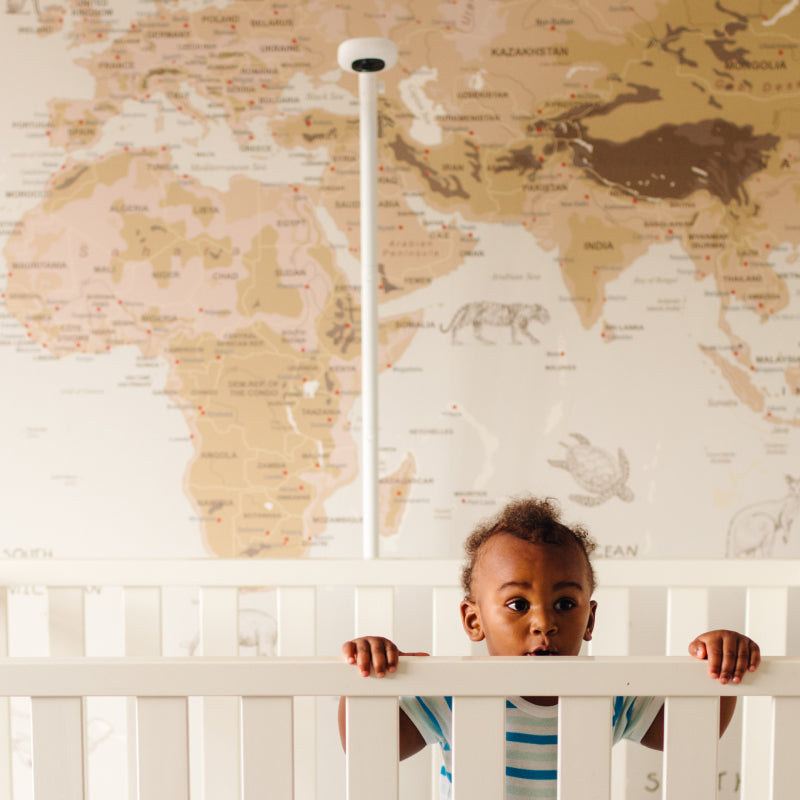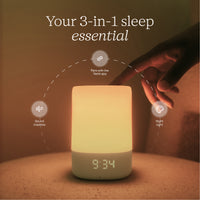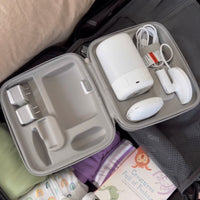One minute your baby is sleeping soundly, snug as a bug in their bassinet. The next, they’re flailing their little arms and wailing.
As a new parent or caregiver, hearing these sudden cries in the middle of the night can be disconcerting. Is your baby in pain? Frightened? Hungry?
Rest assured that most of the time, these periods of crying are related to a baby’s sleep cycle and has nothing to do with any actual discomfort.
Here, we further explore what makes babies cry in their sleep and offer soothing tips to calm your little one back into a peaceful slumber.
Understanding baby sleep cycles
During your baby’s first few months, they’ll cycle through two main stages of sleep: quiet sleep and active sleep. Each full sleep cycle lasts about a 40 minutes, at which time the baby will repeat the cycle.
But how does this relate to why newborns cry in their sleep?
Sleep cycles are often why your little one might let out an unexpected cry before falling back to sleep. Below, we discuss a baby’s typical stages of sleep and what causes those startling mid-sleep cries.
Quiet sleep
Also referred to as non-rapid eye movement (NREM) sleep, quiet sleep is your baby’s first sleep phase. During quiet sleep at this age, your little one will likely transition from drowsiness to a deep, restful sleep with minimal movement. They will remain still in this phase until they transition to active sleep..
Active sleep
Once babies enter the second phase of sleep, also known as rapid eye movement (REM) sleep, their eyes begin moving back and forth, prompting their ability to dream. Sometimes this causes their arms and legs to move, which can jostle them awake and cause them to cry. You may also notice an increase in sounds or facial expressions during this time that might make you wonder “Why do babies make noise in their sleep?” or “Why do babies smile in their sleep?”
As babies transition to active sleep, sometimes they accidentally wake themselves up, which can also elicit the occasional wail. While your first instinct might be to pick them up and soothe them, give them a moment. Often, they can put themselves back to sleep.
How to soothe a crying baby during sleep
When you’re barely awake yourself and hear your baby's abrupt cries, your mind might race, wondering how to soothe them. So,
if they don’t fall back asleep on their own, give one of these gentle techniques a try:
- Use a white noise machine to dull any distracting noises.
- Give them a pacifier to soothe them back to sleep.
- Gently pat or stroke their back to provide comfort.
- Be calm and patient. A soothing presence may help them settle down more quickly.
- Check for any signs of discomfort that may be causing the crying, such as a dirty diaper, hunger, or a baby who has gotten too hot at night.
If your baby still seems unsettled, try additional comforting methods:
- Pick them up briefly for a gentle cuddle or rock them softly for a few minutes.
- Offer a quiet lullaby or a soft hum to create a calming atmosphere.
If your little one continues to cry or their cries intensify despite consistent efforts to soothe them, consider seeking advice from your pediatrician.
Find greater peace of mind with Nanit
As a new parent, increased peace of mind is invaluable when it comes to your baby's sleep. With the Nanit Pro Camera, you’ll have a bird’s eye view of your baby, night and day, no matter where you are.
With a simple tap on the Nanit app, you can instantly check in on your little one. And with Nanit’s convenient cry detection feature, you’ll receive a notification the moment they cry, allowing you to assess the situation in seconds.
In addition, Nanit’s Breathing Wear utilizes sensor-free breathing motion monitoring, providing you with reassurance that you can capture their breathing motion while they sleep.
Nanit has your family’s best interest—and best sleep—in mind. Discover the Nanit bundle that suits your needs for a better night’s rest for all.
Key takeaways
- Understanding baby sleep cycles. Do babies cry in their sleep? Babies cycle through two main stages of sleep that can cause the occasional cry: quiet sleep and active sleep.
- Calming a crying baby. To soothe a crying baby, try using a white noise machine, offering a pacifier, gently patting or stroking their back, and checking for signs of discomfort.
- Using a smart monitoring tool. The Nanit Pro Camera tracks your baby's sleep patterns and provides insights into their sleep quality and duration.
Sources:
Journal of Clinical Sleep Medicine. The Visual Scoring of Sleep in Infants 0 to 2 Months of Age. https://jcsm.aasm.org/doi/10.5664/jcsm.5600
Nationwide Children’s. From Wide-Awake to Fast-Asleep: Baby’s Sleep Patterns. https://www.nationwidechildrens.org/family-resources-education/family-resources-library/from-wide-awake-to-fast-asleep-babys-sleep-patterns
NCT. Why Does My Baby Cry In Their Sleep? https://www.nct.org.uk/baby-toddler/crying/why-does-my-baby-cry-their-sleep





















































